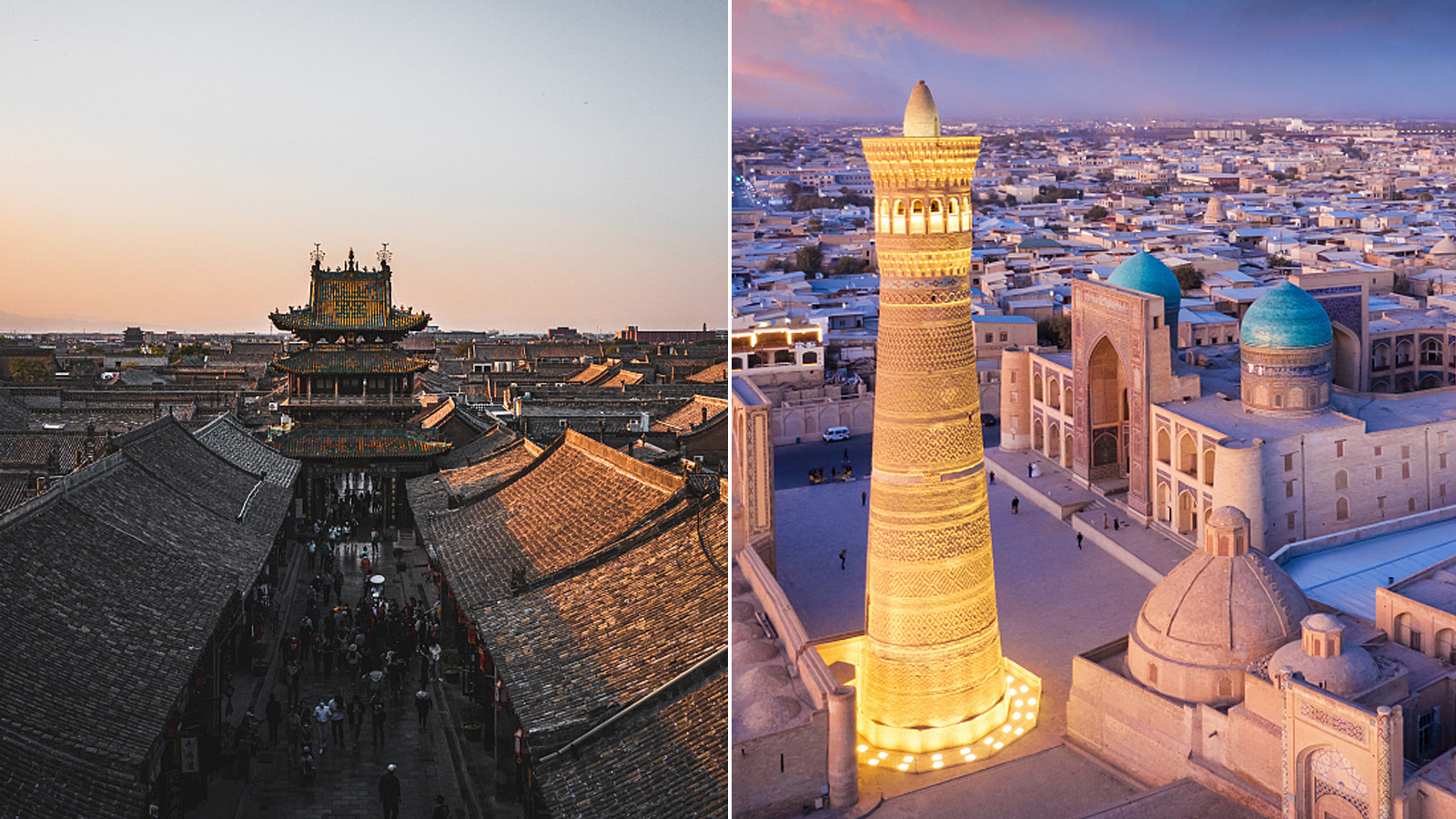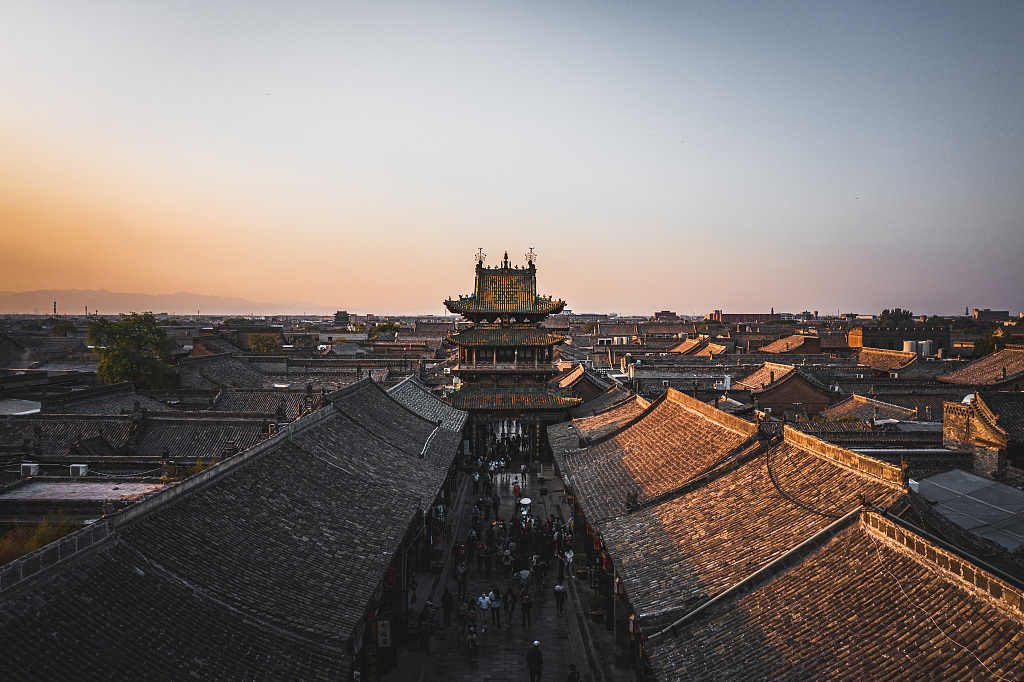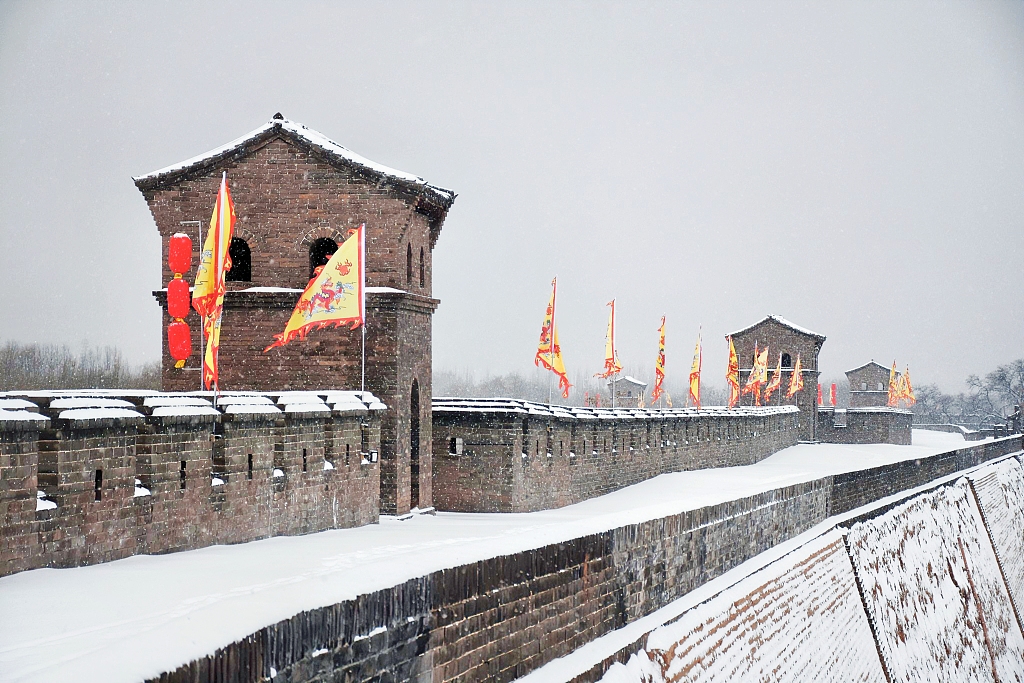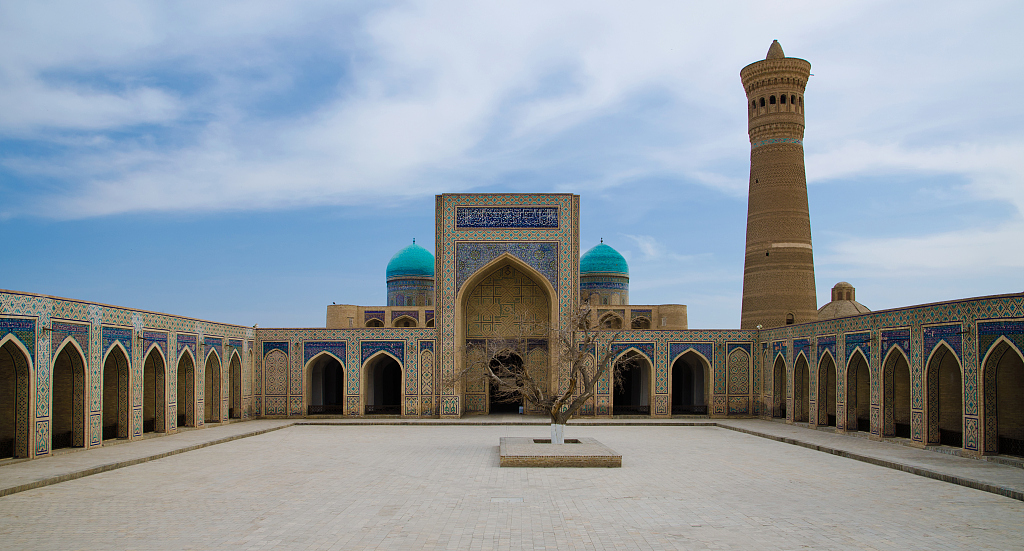
The Ancient City of Pingyao in China (left) and the Historic Centre of Bukhara in Uzbekistan /CFP
The Ancient City of Pingyao in China (left) and the Historic Centre of Bukhara in Uzbekistan /CFP
The Ancient City of Pingyao, now a must-see tourist attraction in Shanxi, has won a worldwide reputation for its complete and well-preserved urban fabric rooted in the Ming (1368-1644) and Qing (1644-1911) dynasties. More than 3,000 kilometers away in Uzbekistan, the Historic Centre of Bukhara shares a similar development progress with Pingyao. The ancient city is regarded as the most complete example of a medieval city in Central Asia, with numerous building complexes dating from the 10th to 16th centuries. Take a closer look at these two UNESCO World Heritage sites and enjoy an immersive experience of life centuries ago in the cities.
Ancient City of Pingyao
Situated in north China's Shanxi Province, the Ancient City of Pingyao was first established as a garrison base about 2,800 years ago during the Western Zhou Dynasty (1046-771 BC). It gradually formed its current appearance in the early Ming Dynasty and served as China's financial center in the late Qing Dynasty.

A bird's-eye view of the Ancient City of Pingyao /CFP
A bird's-eye view of the Ancient City of Pingyao /CFP
Covering an area of 225 hectares, the Ancient City of Pingyao is a complete building complex with a neat and orderly urban layout where all buildings are strictly symmetrical. More than 300 cultural relics and nearly 4,000 traditional buildings exist in the ancient city, showing the evolution of architectural styles and town planning of Han people over five centuries.
The county government yard in Pingyao is the largest existing county government building complex in China. Parts of the yard were built 600 years ago and are well preserved. Rishengchang Bank, established in 1823, was the forerunner of China's banking system. During its century-long operation period, it opened branches across China and even expanded to Europe, the United States, and many Southeast Asian countries. With more than 2,000 existing painted sculptures from the Ming and Qing dynasties, Shuanglin Temple has been reputed as an "Oriental art gallery of painted sculptures." Wanfo Shrine, the main hall of Zhenguo Temple, dating back to the Five Dynasties (907-960), is one of China's earliest and most precious timber structure buildings in existence. The thousands of dwellings and shops in the ancient city are decorated with sophisticated wood, stone and brick carvings, displaying the archeological aesthetics of Han people in north China.

The city walls of Pingyao have a solemn appearance in snow. /CFP
The city walls of Pingyao have a solemn appearance in snow. /CFP
The Ancient City of Pingyao is an outstanding example of Han cities in from the 14th to 20th century. It retains all the Han city features and provides a comprehensive view of cultural, social, economic and religious development in Chinese history.
Historic Centre of Bukhara
Located on the ancient Silk Road in southwest Uzbekistan, the Historic Centre of Bukhara is a well-preserved Islamic city and was once an important economic and cultural center in Central Asia between the 9th and 16th centuries.

A bird's-eye view of the Historic Centre of Bukhara /CFP
A bird's-eye view of the Historic Centre of Bukhara /CFP
The city is more than 2,000 years old and its current overall townscape demonstrates the high and consistent level of urban planning and architecture in the Medieval Period (476-1453). Most of the buildings in Bukhara were set up in the 16th century; some important monuments that have survived since early times include the Ismail Samanai tomb, the best existing example of 10th century architecture in the whole Muslim world; Poi-Kalyan minaret, a masterpiece of decoration in brick in the 11th century; Ulugbek Medresseh, an Islamic institute of the Timurid Dynasty (1370-1507); and the Poi Kalyan complex, featuring various styles of ornate mosaics and colorful tile work.

The Poi Kalyan complex in Bukhara /CFP
The Poi Kalyan complex in Bukhara /CFP
Bukhara's urban layout and buildings had a profound influence on the evolution and planning of towns in a wide region of Central Asia. And as a crucial spot along the Silk Road, it witnessed busy trade and cultural exchanges for centuries. Walking along the streets, people feel like they have traveled back to the flourishing 16th century, far from modern times.